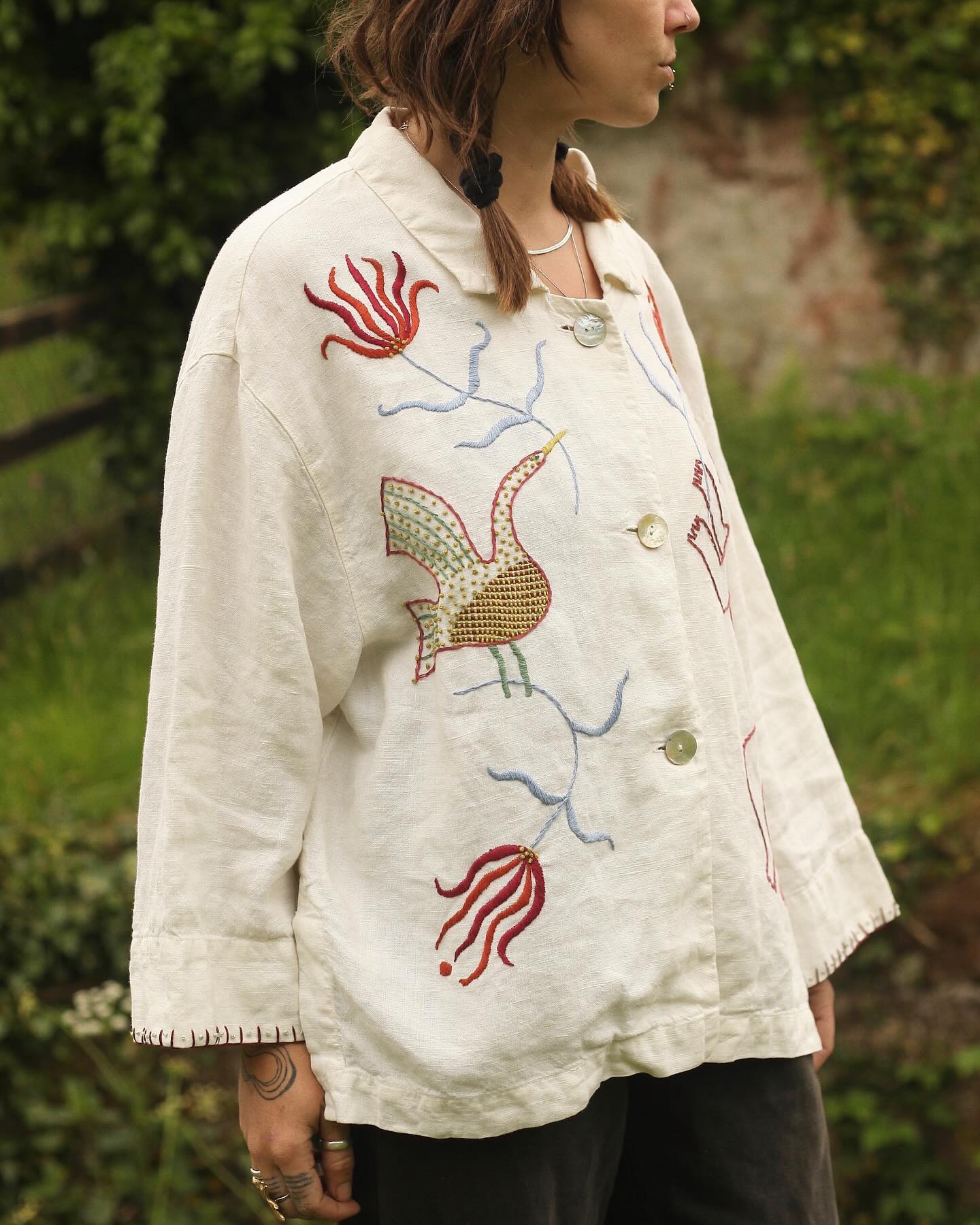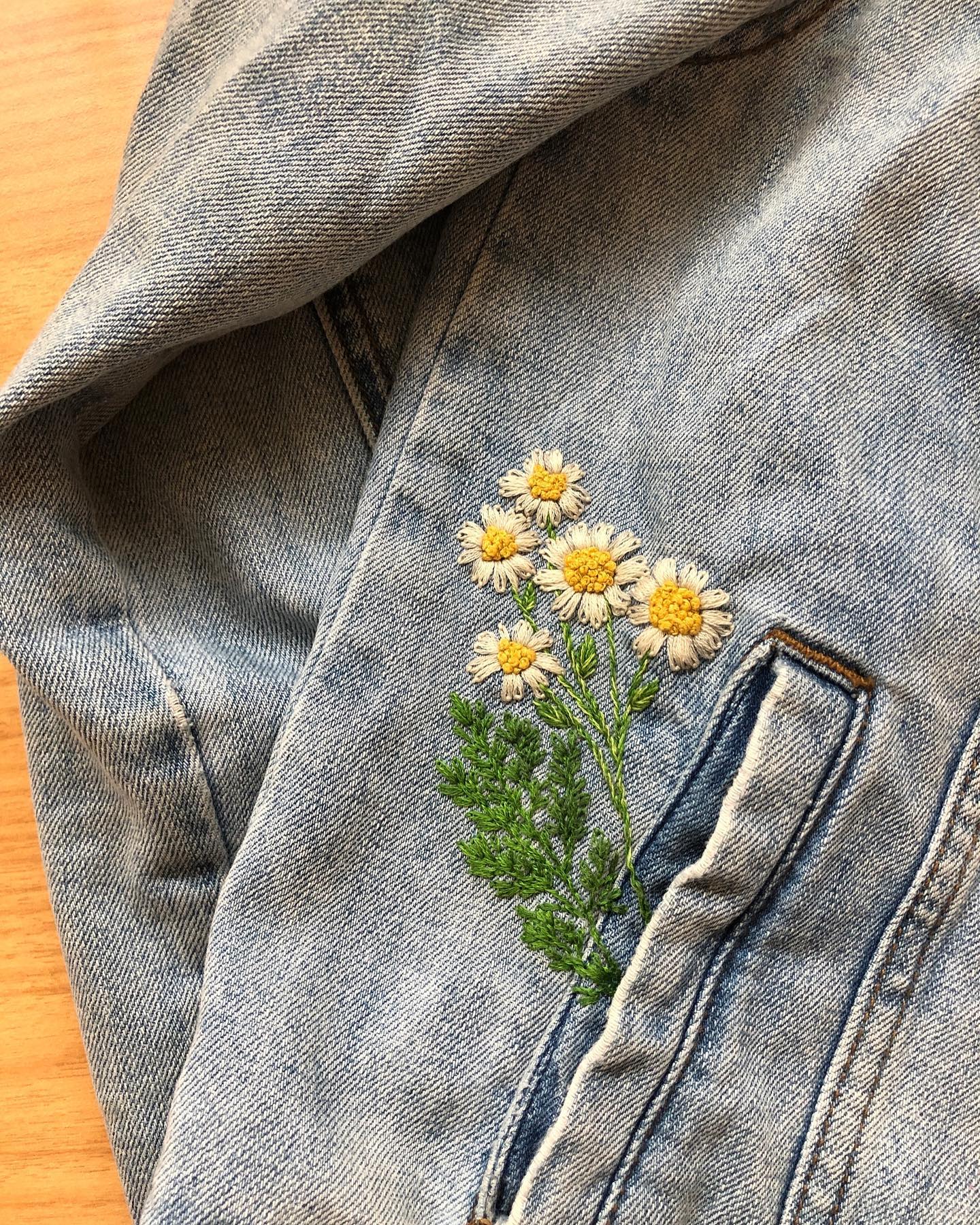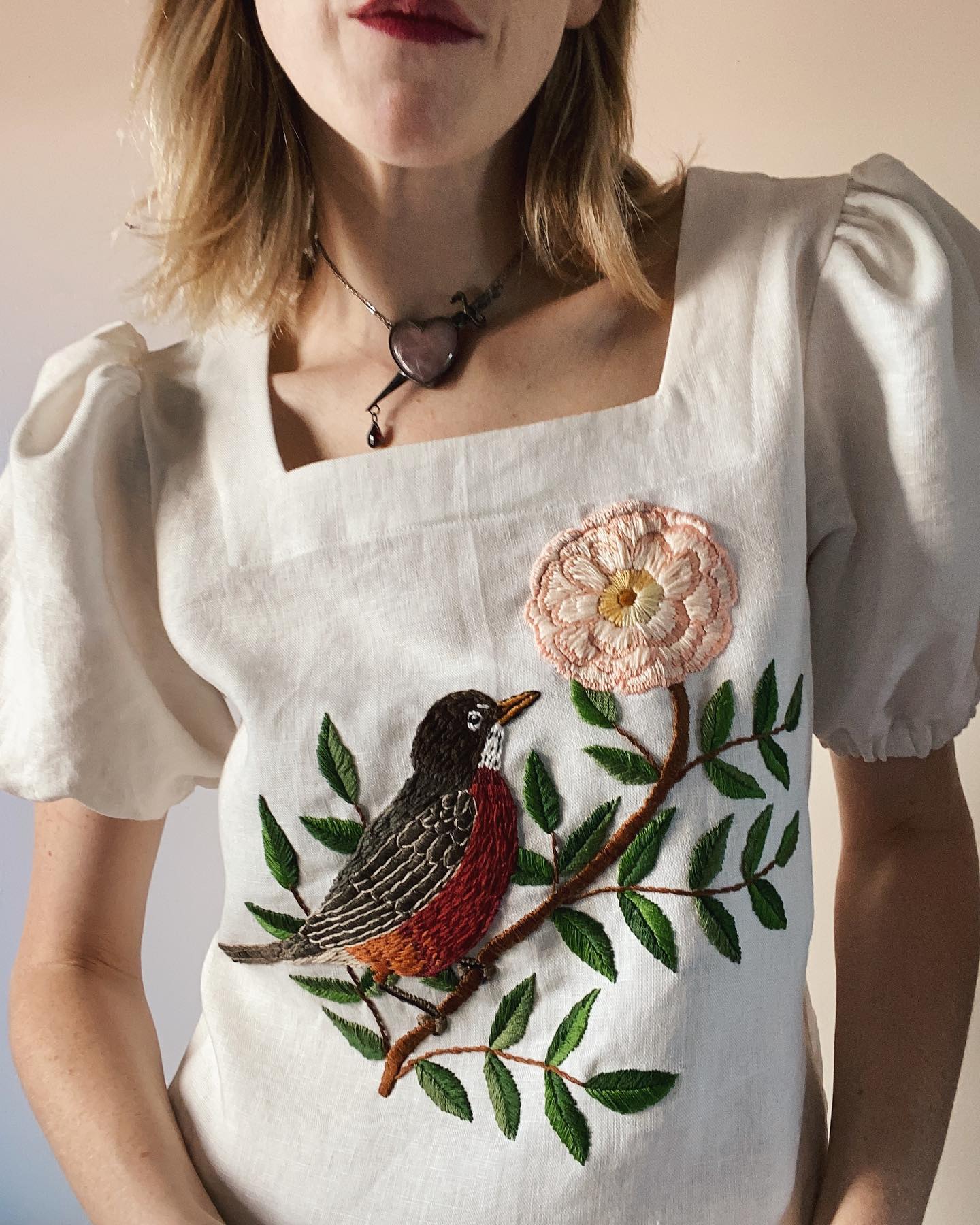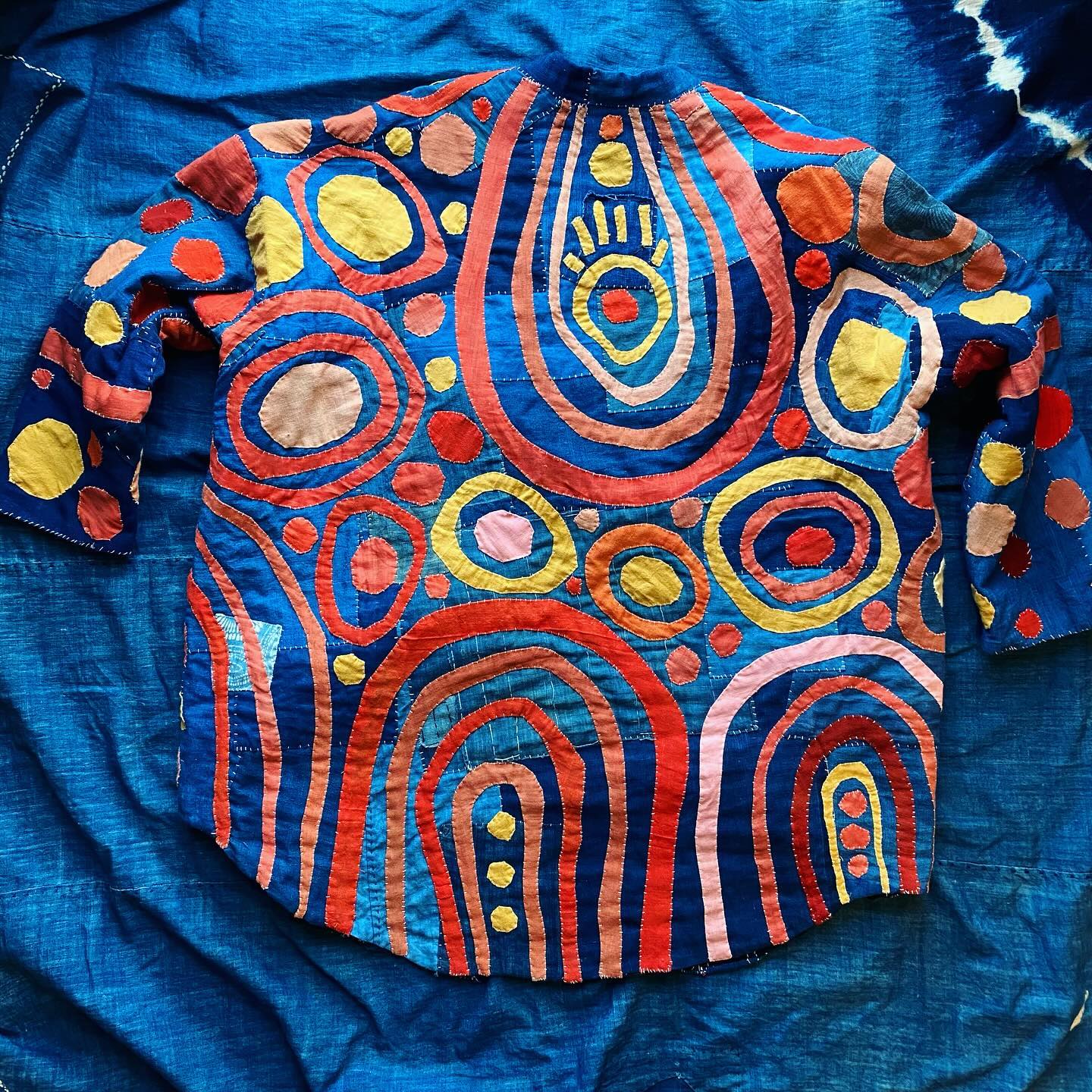Pssst! This writing first appeared in my weekly newsletter, Orts! If you’re a fan of textile art and crafts, check out my past newsletters and subscribe here.
I’m doing a low-buy year (similar to a no-buy year), and one way I’m doing it is by zhuzhing the clothing in my closet that could use some love. Embroidery is the perfect way to do that! By embroidering a shirt, that cozy frock can have a new lease on life with stitching and appliqué.
Whether you’re doing no-spend, low-spend, or just want to live more sustainably, embroidery on clothing is possible for anyone! But what will you embroider? That’s the eternal question. For that, I always like a bit of inspiration. Embroidered inspiration, that is.
Check out four fiber artists who upcycle clothing with thread and applied fabric. Each person has their own style, but the outcome is the same: a garment with a one-of-a-kind design on it.
Plus, scroll down for three dos and two don’ts to remember as you embark on your embroidered clothing journey.
Here are some do’s and don’ts for embroidering on clothing:
DO when stitching on your clothes:
- If you’re new to embroidery on clothing, start with a woven garment made of natural fibers, like a cotton or linen button-down shirt. This type of material is much easier to work with because it has little or no stretch. Once you’ve gained more experience with clothing, give knits a try!
- Consider the placement of a design. My favorite thing about clothing embroidery is the opportunity for fun! You can get playful with your placement. Stitch a design next to the pocket of a shirt, for instance, to make it look like it’s popping out of there. (Like Melissa of MCreativeJ has done!)
- Make sure the embroidery feels comfortable on your skin when you’re done. Sulky makes Tender Touch, which you iron onto the backside of your embroidery (the part that touches your skin). It’ll cover uncomfortable or scratchy threads.
DON’T when embroidering on clothing (or at least proceed with caution):
-
Set your design up to fail. Think twice about putting the design in a high-traffic area that could easily rub or get torn, like on the elbow of a shirt.
- Make your stitches too long. When working on clothing, shorter stitches are better. Long stitches can look floppy on clothing, especially as they contour the body. They can also get misshapen in the wash or snag as you wear the garment.





